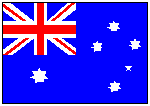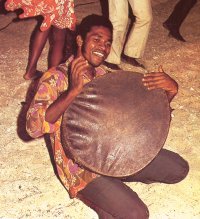SmartClicks: Target Advertising For Free
SmartClicks: Target Advertising For Free


![]()

Sega at Harbourfront,
Lake Ontario, Canada
|
|
||
|
Madeleine et Clancy Philippe,
|
||
|
|
Philippe OnLine brings you
Artists who do not wish to have their music promoted on this site, please advise and we will remove the clips accordingly. On the other hand, artists who wish to have their music promoted, please send us a CD or cassette and we will include clips of your music. |
|
| The Sega
Wherever she came into contact with the outside world, Africa’s influence was profound. When the slaves left, they went empty-handed with nothing but their memories, voices, bodies, so initially this influence was an oral one: it was song, rhythm and dance. And these traces of Africa grew, despite their new masters’ world. This was how the sega evolved into the traditional song and dance of the people of Mauritius and Rodrigues, and other Indian Ocean islands too, like Seychelles and Reunion Island. Sega is music of exiles. Slaves would get together at night after a long days work and tell stories. They would make up "sirandanes" ( Creole riddles) and sing for their lives, of their feelings, dancing all the while to those rhythms which had been their own on African soil. Ancient sega also had magical, sacred function and was inseparable from life’s most important moments from birth to death. The "Death Sega", for example, accompanied funeral rites. This was danced around the coffin as certain rhythms were played on all sorts of resonant objects to chase away the spirit of the death. Eight days following a death would be consecrated to the memory of the deceased and the occasion for vigils during which all was done to encourage the dead man’s spirit to depart. On the eighth day a sega should be organised with theatrical performance of fables and fairy-tales done by masked, fancifully dressed actors. All this is a thing of the past. Sega seems to have lost its ritual character around the turn of the century , remaining pure entertainment. Sega is a kind of improvised, and often rather juicy account of life’s ups and downs, the Creole language being perfectly suited to this art form with its great plasticity, its plays on words , double-barrelled meanings and onomatopoeia., all dispensable to a sega performance. With a past closely linked to magic, its highly erotic dancing and its overt on words often aimed no doubt at the powers that be, the sega found no favour, with the Church and civil authority and was frowned upon, often even banned. After the abolition of slavery, Blacks left the sugarcane plantations, forming settlements on the banks of the Rivere Noire, in Mahebourg and a few other sites. Ancient classical sega, kept alive and thriving in these Afro-Mauritian communities, took the form of a drum call followed by a presentation of the main theme, generally improvised by a woman and repeated incessantly by a chorus until they had created an obsessional atmosphere stimulating to the dancers (cf. Ocora C 590005, Mauritius: Mauritian ravanne sega and Rodrigues drum sega.) This sega, the so called "Ravanne sega" named after the ravanne which was the main percussion instrument used, remained close to the original art form and was in some respect the prototype of the "real thing". But along side this, the Blacks and Metis who lived in closer contact with their former masters, developed a more "civilised" form of sega. They would put on segas at parties or to honour guests. Yet it was in some form the first rehashed sega, rather subdued and inoffensive. They called this the " dans la cour grand’case" sega and it was later followed by even more Europeanised sega one even more toned down and adapted to urban culture, the so-called "drawing-room sega". Jacques Cantin was the first, back in the fifties, to get the sega on the air. He was soon followed by Serge Lebrasse and others, which led to today’s modern sega with its hit tunes and its stars. This kind of sega can be heard in homes or in public places likes disco’s or tourist hotels. Between this type of sega which could be classified as urban- some would say commercial- with its electric guitars, synthetiser and drums, and the traditional sega of Afro-Mauritian commuities like those of Riviere Noire and Mahebourg (of which the most notable exponent is the group Z’enfants Ti Riviere (Ocora C 590005), another type of sega has sprung up. Although steeped in tradition , it has been strongly influenced by Western popular music, a sega that could have evolved only through men with their feet in both worlds, an amalgam of the cultures of Africa and European land-owners. Men who, through their particular work, were called to move in the circles of White land owners while continuing to live in their villages. The sega artistry of Ti Frere is just that, a product of the assimilation of these two models. |
||
 The Instruments
|
The Dance Email us at philippe@enternet.com.au
|
|
Extract on TiFrere are from the booklet accompanying the CD Homage a Ti Frere.
Certain descriptions have been borrowed from Jean Erenne, Alain Desmarais and Jean-Claude Deojee who devoted his maters thesis to the sega: < The Origins and Evolution of the Sega>, Universite-Paris III.
Lucien Putz, Translated by Jeffrey Grice.
Designed and compiled by Madeleine and Clancy Philippe
Information contained in this homepage is given as supplied and in good faith. No responsibility is taken for any losses or misgivings which may arise from the use of any supplied information. We welcome emails bringing to our attention any inaccuracies or suggestions for improvement.
Copyright Clancy J Philippe - Compiled May 1997
|
This page is hosted by |